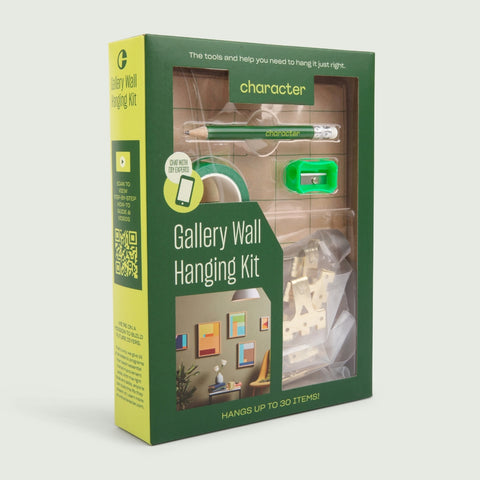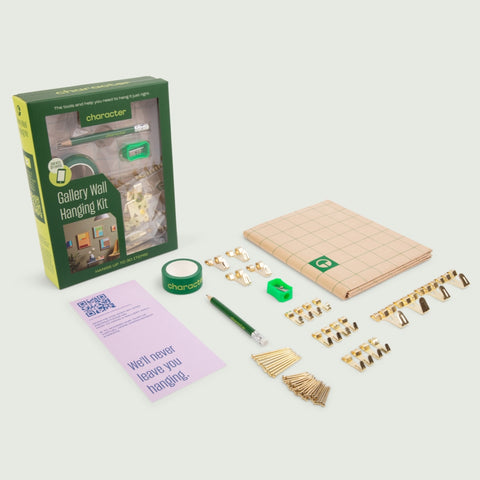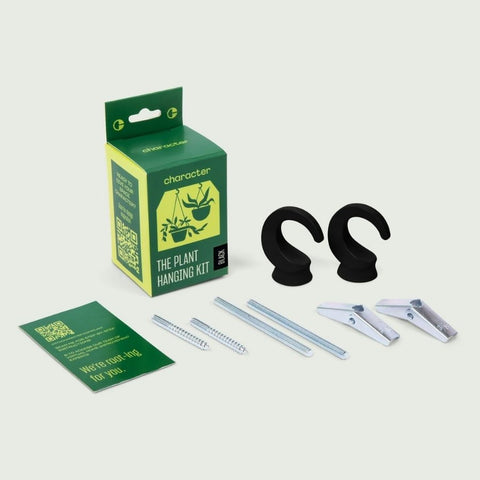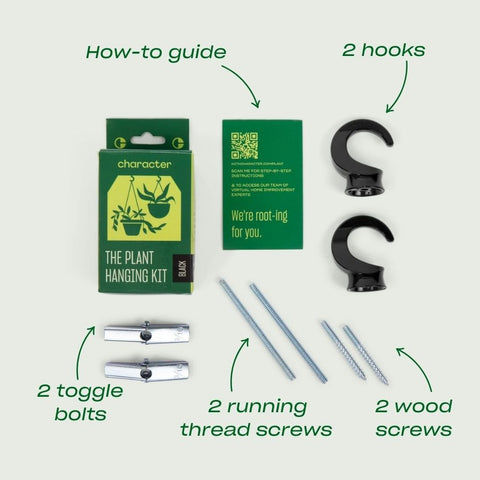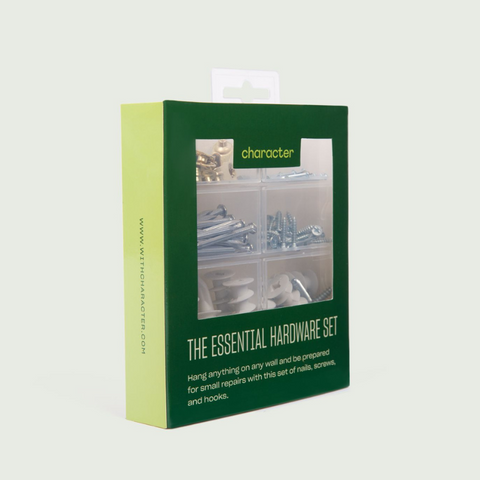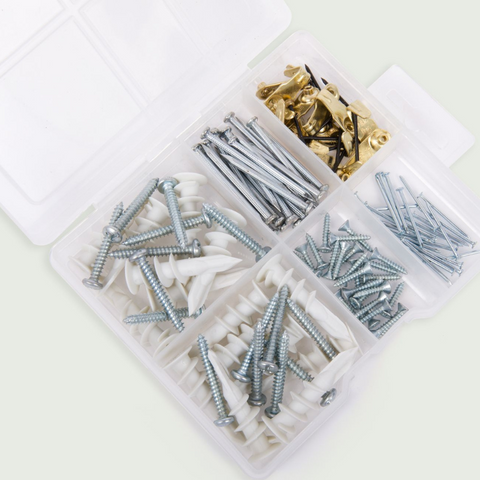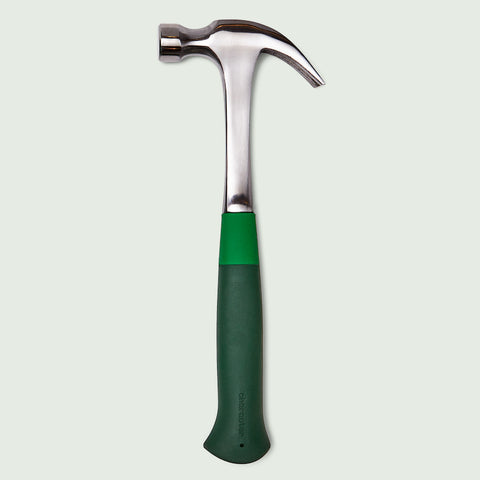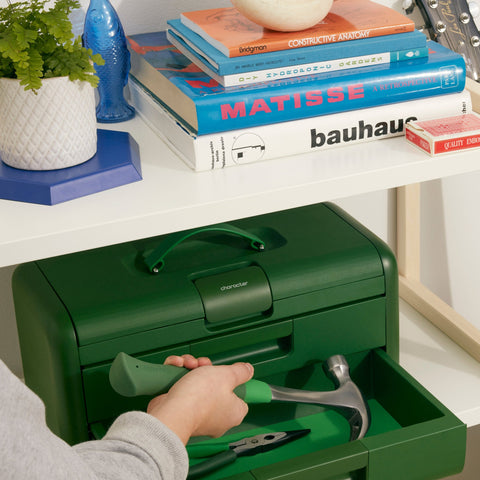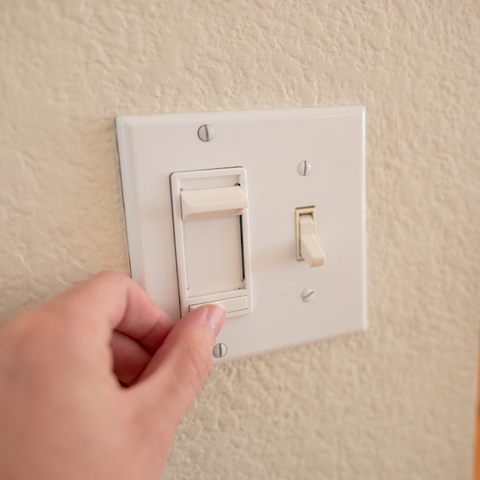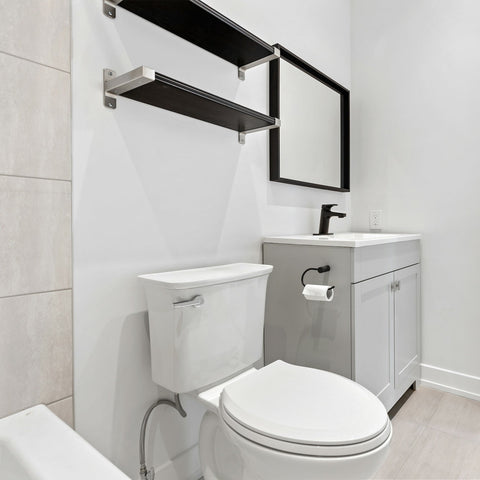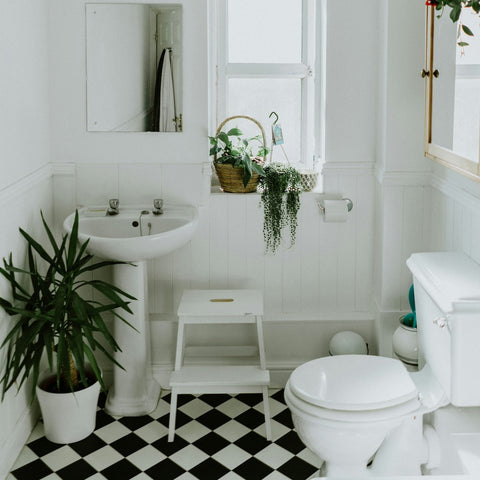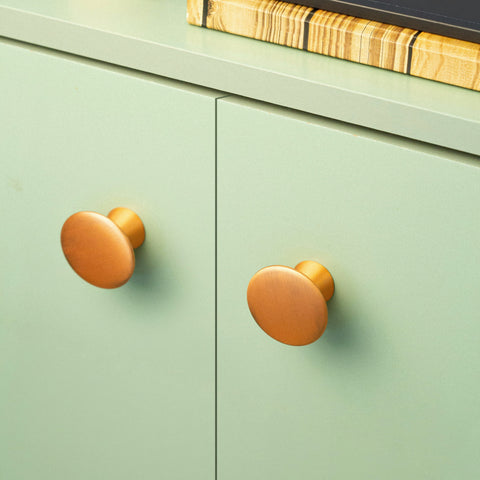Once you’ve determined your wall type, it’ll help inform decisions on future DIY projects.
For example, if you’ve got drywall, you’re going to have a fairly easy time installing items like screws or nails into the wall to hang art, but drywall’s lightweight material means heavier items will require wall anchors because the inside of the wall is hollow. With plaster walls, hammering in a nail won’t work because the material behind the surface is so dense, so you’ll likely need to use screws rather than nails to hang artwork.
We’ve got project kits that curate all the hardware you'll need depending on your wall type and if you need to patch a hole in your drywall or plaster wall, we’ve got you covered with that, too!




